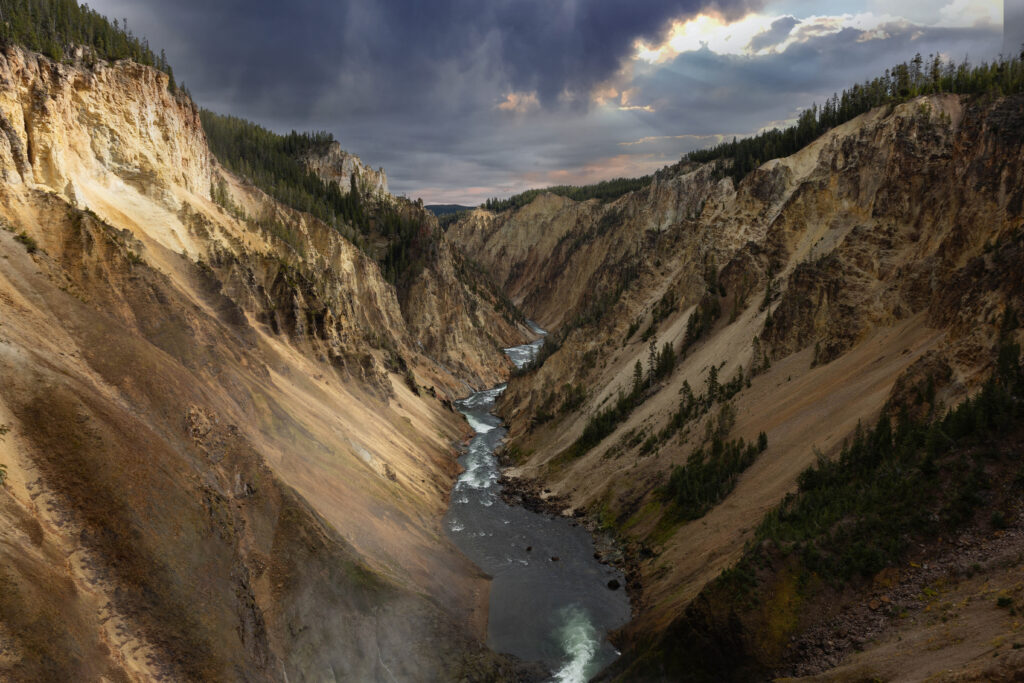I spend time “in nature” as often as I can. I haven’t been camping in a long time, but we still hike, fish, hunt, swim, and laze by the river whenever opportunity presents itself. I treasure the serene landscapes, gentle breezes, and the calming sounds of birdsong. Yet, on our recent visit to Yellowstone National Park, we realized that nature is multifaceted. Within its embrace, there lies a dance between tranquility and tumultuousness. It’s a paradoxical relationship, and the relationship has had its difficulties.
The Wolves Return
The early and mid years of the 20th century saw the eradication of wolves from Yellowstone. It took nearly 70 years to truly understand the implications. After a 70-year absence, in the mid-1990s, wolves were reintroduced to the park. This action, initially met with controversy, soon unveiled the profound impact these predators had on the ecosystem. As top predators, their presence controlled populations of large herbivores like elk, allowing the previously-overgrazed lands to rejuvenate. With flourishing vegetation, species like beavers returned, creating habitats for countless other creatures. Trees along the river cooled the water and brought back cold-water-loving fish. This chain reaction provides an example of nature’s interconnectedness and balance, where the wild and violent act of hunting by wolves has led to a cascade of peace and vitality throughout the park.
The Roar of Tranquility
Like the wolves, waterfalls in Yellowstone demonstrate this duality of nature. The mighty Lower Falls of the Yellowstone River plunges a staggering 308 feet, creating a thunderous roar that can be heard from miles away. Its sheer power can erode rock, reshape landscapes, and in its tumult, one might expect a sense of disarray. Yet, for many visitors, sitting beside a waterfall is a meditative experience. The consistent rush of water, while fierce, provides a rhythmic backdrop that calms the restless mind.
The forceful descent of water, like the predatory prowess of the wolf, serves a purpose. Waterfalls aerate water, making it better for certain aquatic species. Their erosion creates habitats and niches for various organisms. The very violence and chaos of their descent sustain life and contribute to the peacefulness of the surrounding environment.
Embracing Nature’s Dual Nature
My visit to Yellowstone taught me that nature is not just about tranquility; it’s about balance. The wild and violent elements are just as crucial as the calm and serene ones. They’re two sides of the same coin. The reintroduction of wolves and the relentless power of waterfalls remind us that for an ecosystem to thrive, for it to offer those peaceful moments we cherish, it must also embrace its wild side.
In our lives too, perhaps there’s a lesson. In accepting and understanding our storms, we pave the way for clarity and calm. It is in the dance between these contrasts that the true beauty of nature – and life – shines brightest.








